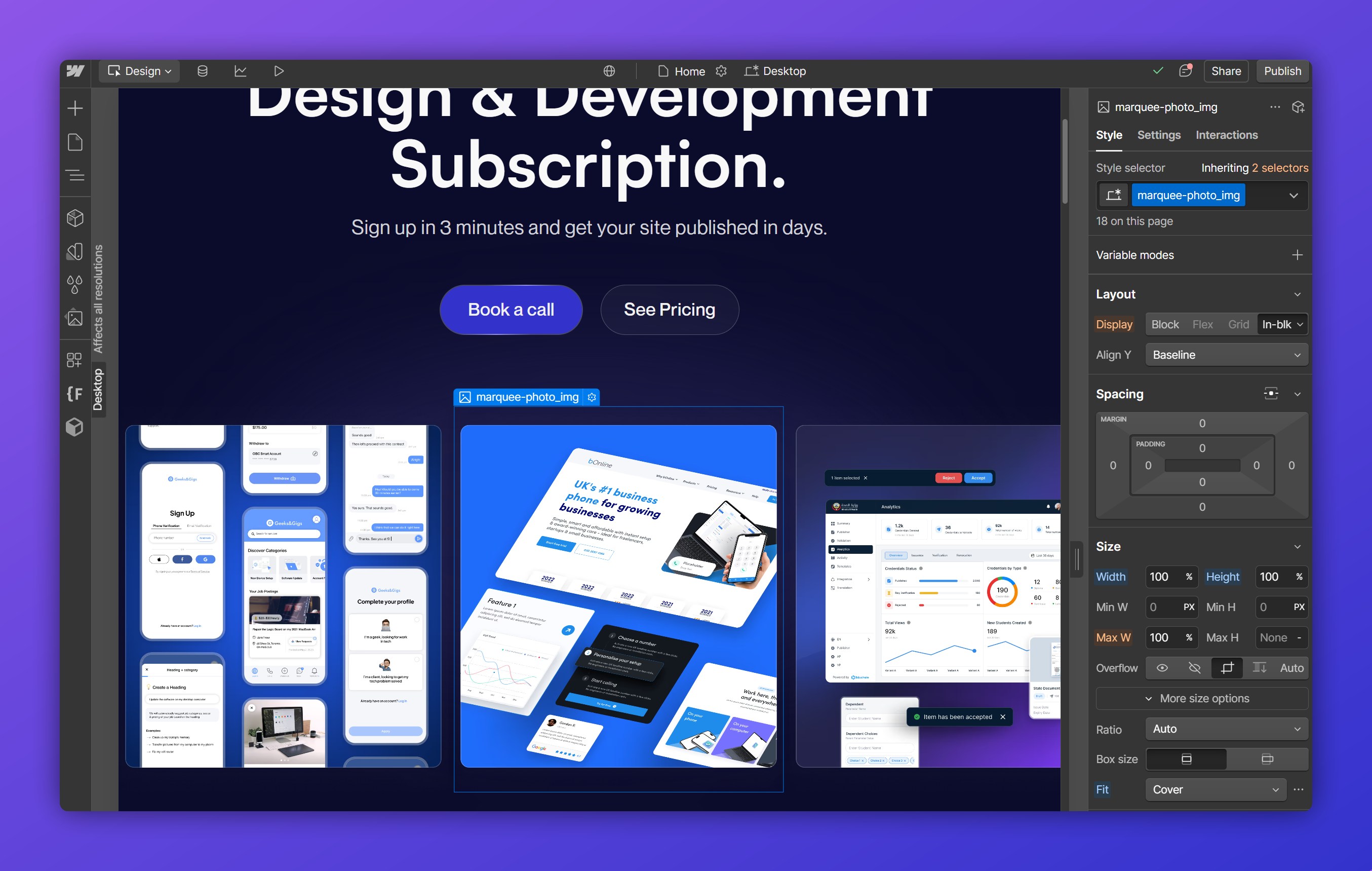TL;DR
Looking for a Shopify alternative? Here are the top options based on different business needs:
Webflow – Best for design flexibility and full creative control.
WooCommerce – Ideal for WordPress users who need a customizable e-commerce store.
BigCommerce – Best for businesses that need scalability and advanced built-in features.
Sellfy – Great for creators selling digital products and subscriptions.
Magento (Adobe Commerce) – Perfect for large enterprises needing total customization.
Squarespace – Ideal for small businesses and creatives looking for simplicity and decent design.
Each platform offers unique strengths, so choose based on your business goals, budget, and required features.
Shopify has long been a dominant force in e-commerce, but it isn't the perfect fit for every business. Whether you're looking for more customization, lower costs, or enhanced scalability, several Shopify alternatives offer compelling features.
In this guide, we compare the best Shopify alternatives for 2025, evaluating their strengths, weaknesses, and ideal use cases to help you find the right e-commerce platform.
Criteria for Evaluating Shopify Alternatives
To determine the best alternatives, we consider:
- Ease of Use – Is the platform beginner-friendly or better suited for advanced users?
- Customization & Flexibility – How much control do you have over design and functionality?
- Pricing & Fees – Subscription costs, transaction fees, and additional expenses.
- Scalability – Can the platform handle business growth and increasing sales?
- SEO & Marketing Features – Built-in tools for driving traffic and conversions.
- Integrations & Support – Available plugins, apps, and customer support options.
Top Shopify Alternatives in 2025
1. Webflow (Best for Design Flexibility)
Overview: Webflow combines a visual design editor with powerful e-commerce features, making it ideal for brands that want complete creative control.

Key Features:
- No-code, drag-and-drop customization with pixel-perfect precision.
- Fully responsive designs with advanced animations.
- Integrated CMS and SEO tools.
Pros:
- Unlimited design possibilities without coding.
- Faster website performance compared to traditional builders.
- Built-in hosting and security.
Cons:
- Learning curve for beginners.
- Less robust third-party app ecosystem than Shopify.
Ideal For: Businesses prioritizing custom design and branding over out-of-the-box functionality. See our full Webflow and Shopify comparison article.
Nexus Creative specializes in Webflow development, ensuring seamless, high-performance e-commerce solutions. Get in touch to build a Webflow-powered online store.
2. WooCommerce (Best for WordPress Users & Flexibility)
Overview: WooCommerce is an open-source e-commerce plugin that turns any WordPress site into an online store.

Key Features:
- Fully customizable store with thousands of plugins.
- No platform fees, making it cost-effective.
- SEO-friendly and integrates seamlessly with WordPress.
Pros:
- Total control over website design and functionality.
- Large community and plugin ecosystem.
- Scales well with additional hosting resources.
Cons:
- Requires web hosting and maintenance.
- Can become bloated with too many plugins.
Ideal For: Businesses already using WordPress or those wanting complete control over their store.
3. BigCommerce (Best for Scalability & Growth)
Overview: BigCommerce is a robust e-commerce platform designed for high-growth businesses.

Key Features:
- No transaction fees, even on third-party payment gateways.
- Multi-channel selling (Amazon, eBay, Facebook, Google Shopping).
- Advanced SEO and marketing tools.
Pros:
- Powerful built-in features reduce reliance on third-party apps.
- Supports large inventories and complex product catalogs.
- Strong security and PCI compliance.
Cons:
- Higher learning curve than Shopify.
- Design flexibility is more limited compared to Webflow or WooCommerce.
Ideal For: Growing businesses that need enterprise-level features without relying on many third-party plugins.
4. Sellfy (Best for Digital Products & Creators)
Overview: Sellfy is an e-commerce platform tailored for creators selling digital downloads, subscriptions, and physical products. We personally believe that Webflow is still much better for digital products, however if you don't fancy a complex design and content control, Sellfy works fine.

Key Features:
- Built-in marketing tools like upsells and email campaigns.
- Print-on-demand integration for merch sales.
- Instant payouts with no hidden fees.
Pros:
- Quick and easy store setup.
- Transparent pricing with no transaction fees.
- Optimized for selling digital goods.
Cons:
- Limited customization options.
- Not ideal for large-scale e-commerce operations.
Ideal For: Content creators, artists, and entrepreneurs selling digital products or merch.
5. Magento (Adobe Commerce) (Best for Enterprise & Advanced Customization)
Overview: A highly flexible, open-source e-commerce platform with extensive customization capabilities.

Key Features:
- Unlimited scalability for large businesses.
- Advanced B2B and B2C e-commerce features.
- Powerful marketing and SEO tools.
Pros:
- Highly customizable for complex e-commerce needs.
- No restrictions on product listings or payment options.
- Strong developer community.
Cons:
- Requires significant development resources and technical expertise.
- Hosting and maintenance costs can be high.
Ideal For: Large enterprises or businesses that require a highly customized shopping experience.
6. Squarespace (Best for All-in-One Simplicity & Design-Focused Brands)
Overview: A website builder with built-in e-commerce functionality, ideal for businesses that want a professional-looking store without complexity.

Key Features:
- Beautiful, modern templates optimized for mobile and desktop.
- Integrated blogging and portfolio features.
- Simple inventory and order management tools.
Pros:
- Easy setup with visually appealing designs.
- No need for additional plugins or hosting.
- Great for branding and storytelling-focused stores.
Cons:
- Limited scalability compared to BigCommerce or Magento.
- Customization is more restricted than Webflow or WooCommerce.
Ideal For: Small businesses, creatives, and brands that value design over advanced e-commerce functionality.
Conclusion
Choosing the best Shopify alternative depends on your business size, design needs, budget, and level of technical expertise.
- For design flexibility and content strategy, Webflow is unmatched.
- For WordPress users, WooCommerce provides deep customization.
- For enterprise-level scalability, BigCommerce or Magento is the best fit.
- For simple and quick setup, Sellfy and Squarespace are solid choices.
If you need expert guidance on migrating your e-commerce store to a new platform, Nexus Creative specializes in Webflow and Shopify integrations. Let’s talk about your e-commerce goals!


.jpg)











